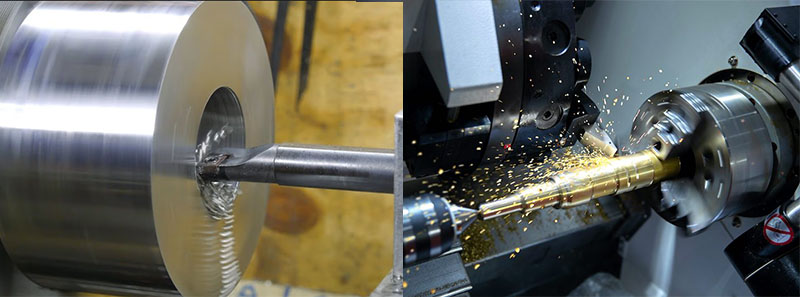What Is The Difference Between Boring And Turning?
1. Different Concepts
Boring is a kind of inner diameter cutting technology that uses a tool to enlarge a hole or other circular contour, and turning is lathe processing. Lathe processing mainly uses a lathe tool to turn the rotating workpiece.
2. Different Sizes
Boring is to enlarge the preformed hole on the workpiece to a certain size with a rotary single edge boring cutter. Turning is the cutting process in which the turning cutter moves in a straight line or curve in the plane.
3. Use Different
During boring, the workpiece is installed on the machine tool workbench or fixture, and the boring cutter is clamped on the boring bar (or integrated with the boring bar), which is driven and rotated by the spindle. When the boring die is used, the boring bar is floating connected with the spindle, and the machining accuracy depends on the accuracy of the boring die; When the boring die is not used, the boring bar is rigidly connected with the spindle, and the machining accuracy depends on the accuracy of the machine tool.
For turning, different turning tools or other tools are used in the lathe to process various rotary surfaces, such as internal and external cylindrical surfaces, internal and external conical surfaces, threads, grooves, end faces and formed surfaces. The machining accuracy can reach IT8-IT7, and the surface roughness Ra value is 1.6~0.8. Turning is often used to process parts with a single axis, such as straight shafts, general discs, sleeve parts, etc.

What Are The Characteristics Of Boring?
- The cutter structure is simple, and the radial size can be adjusted. With one cutter, holes with different diameters can be machined.
- It can correct the axis deviation and position error of the original hole.
- Because the boring machine has many forms of motion, the workpiece can be placed on the workbench to conveniently and accurately adjust the relative position of the hole to be machined and the cutter, thus ensuring the mutual position accuracy of the hole to be machined and other surfaces.
- The quality of boring mainly depends on the accuracy of machine tools and the technical level of workers, so the technical requirements for operators are high.
- Compared with reaming, single edge boring cutter has poor rigidity and uses smaller cutting parameters, so its productivity is low and it is not easy to ensure stable machining accuracy.
- It is not suitable for machining slender holes.


